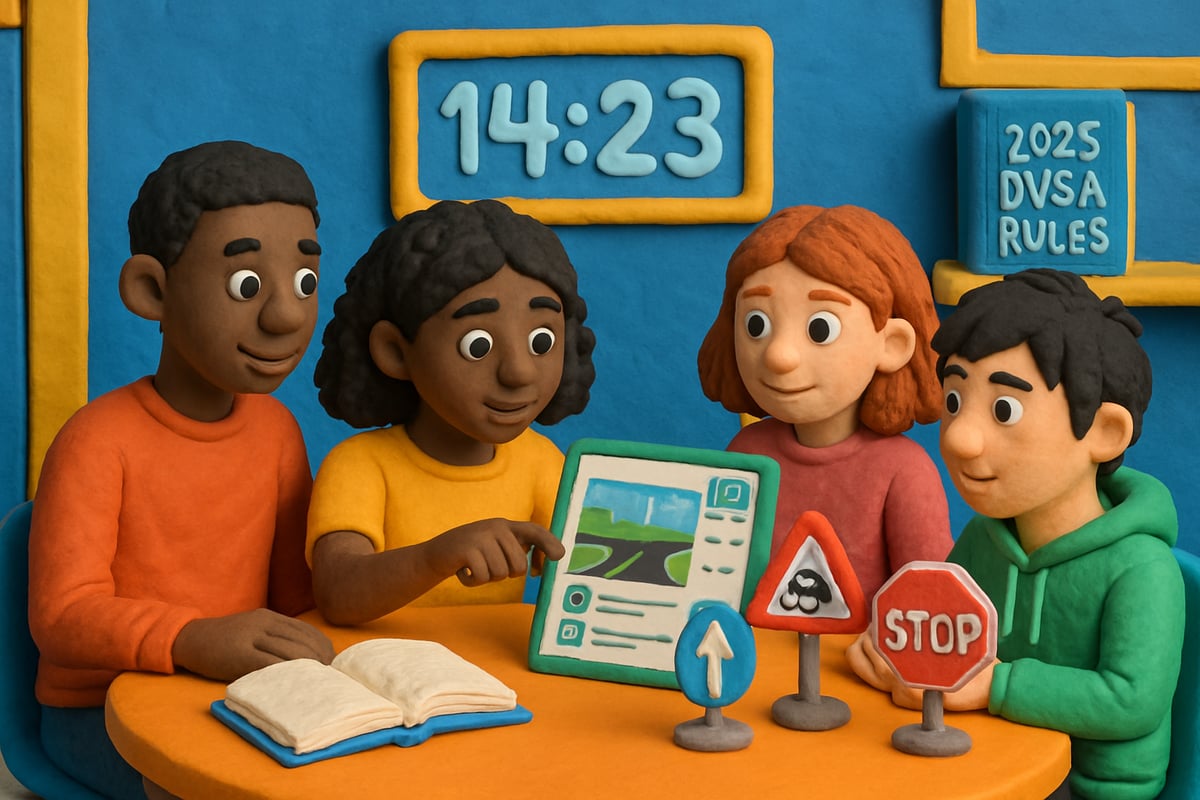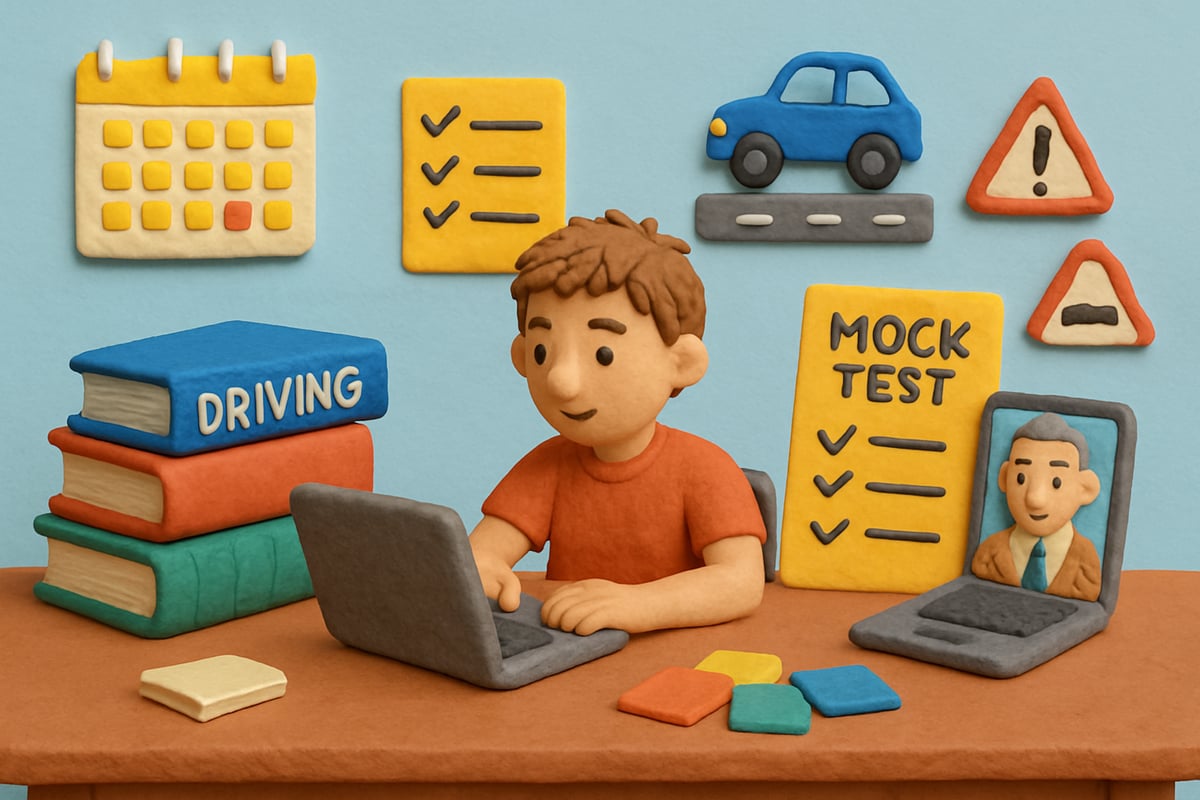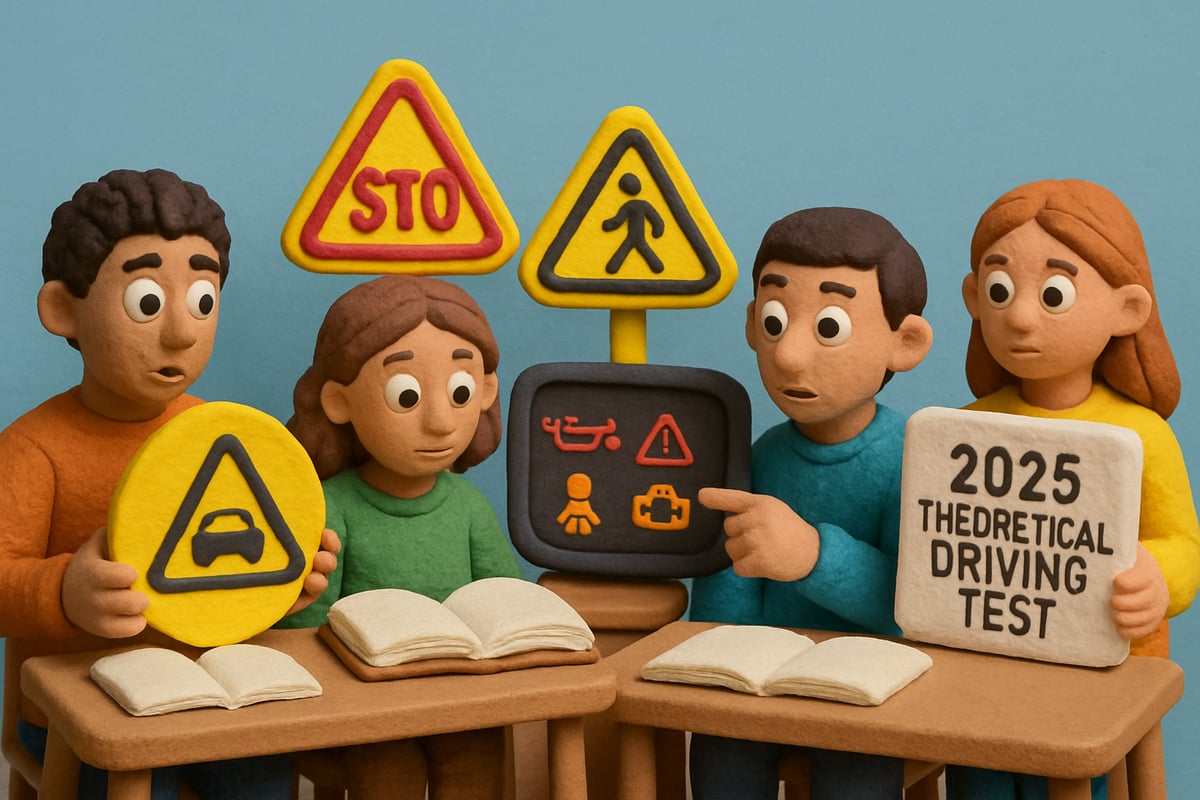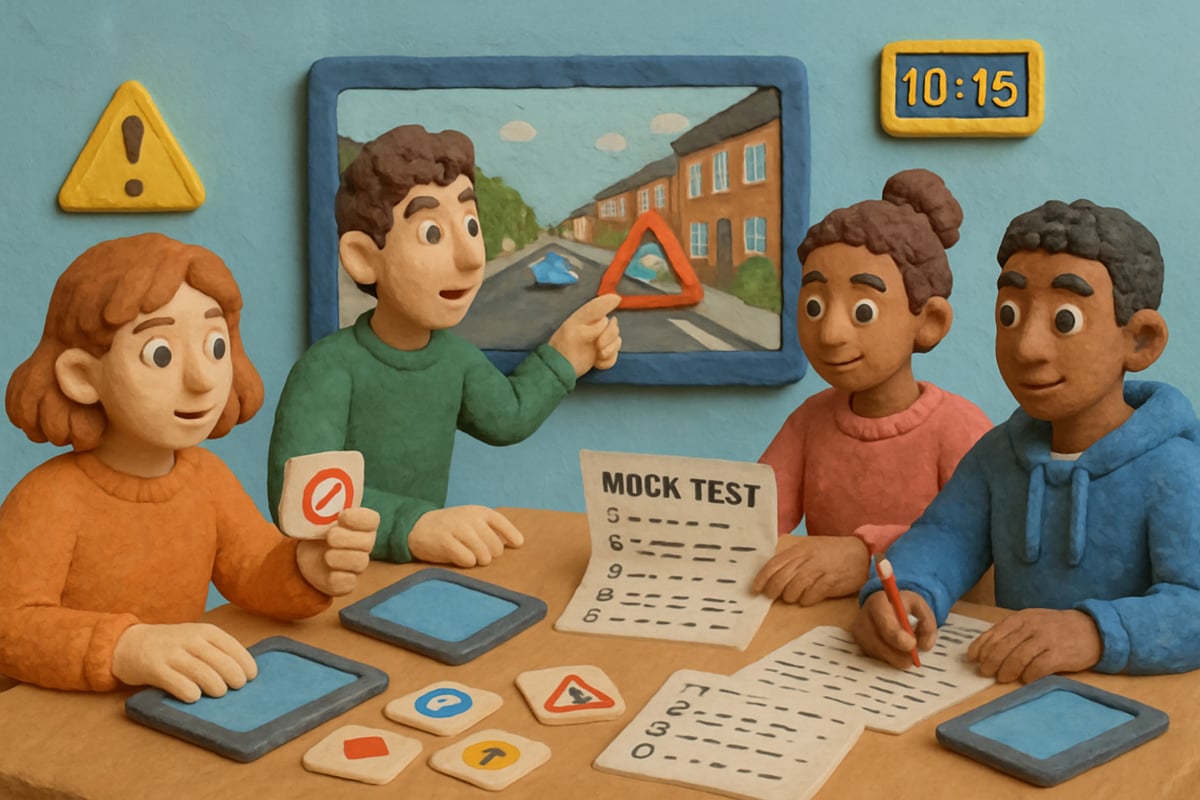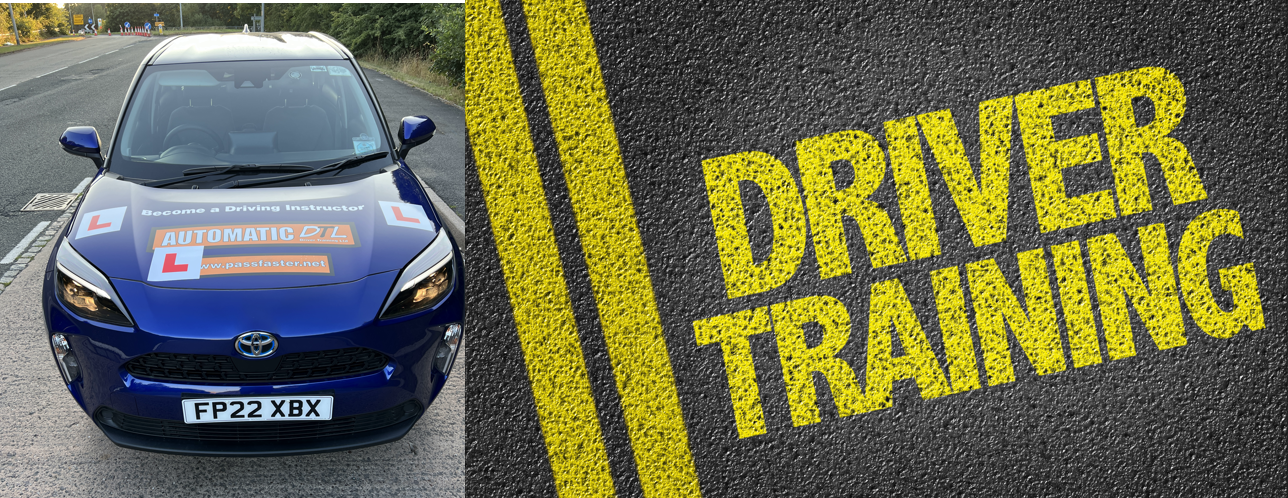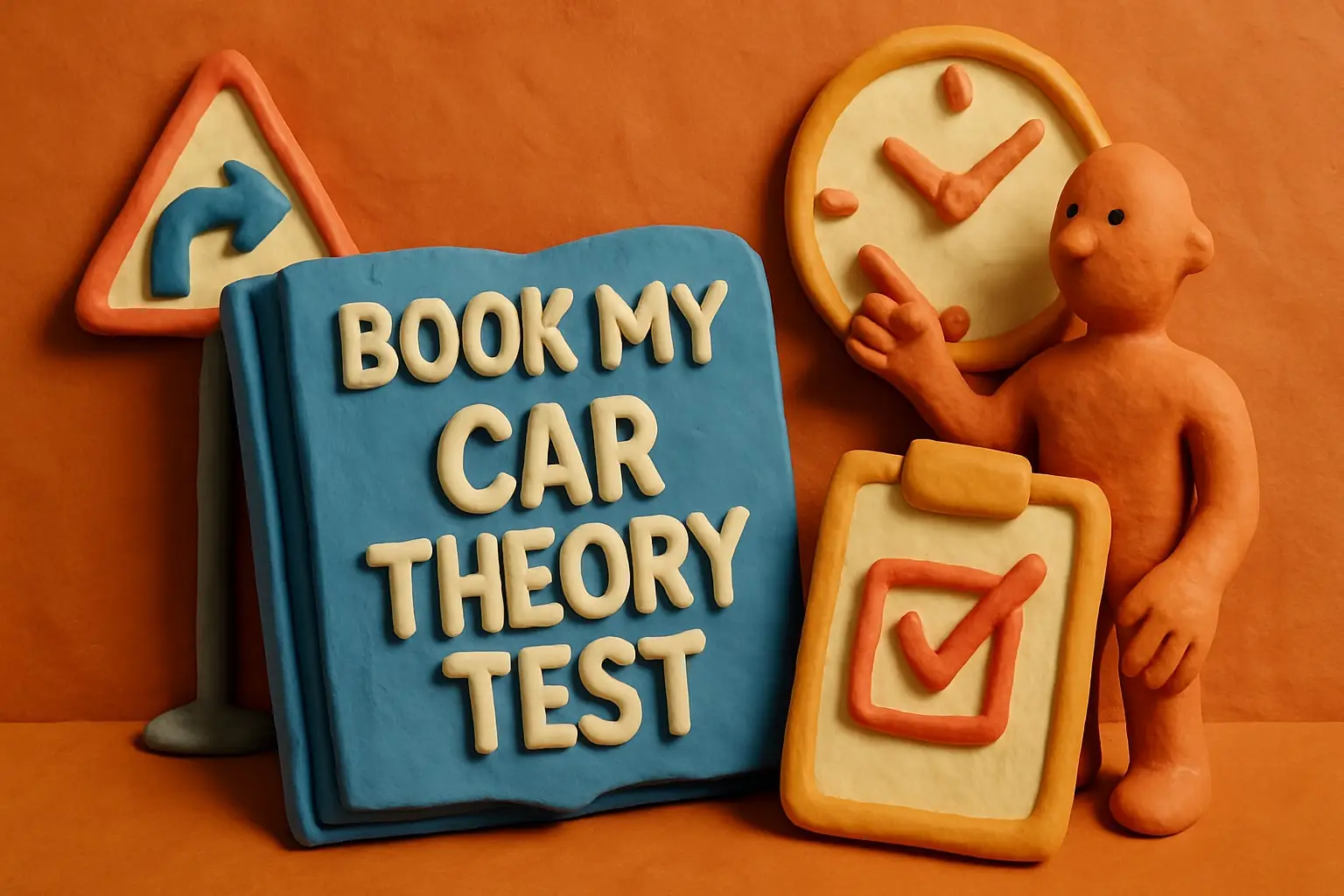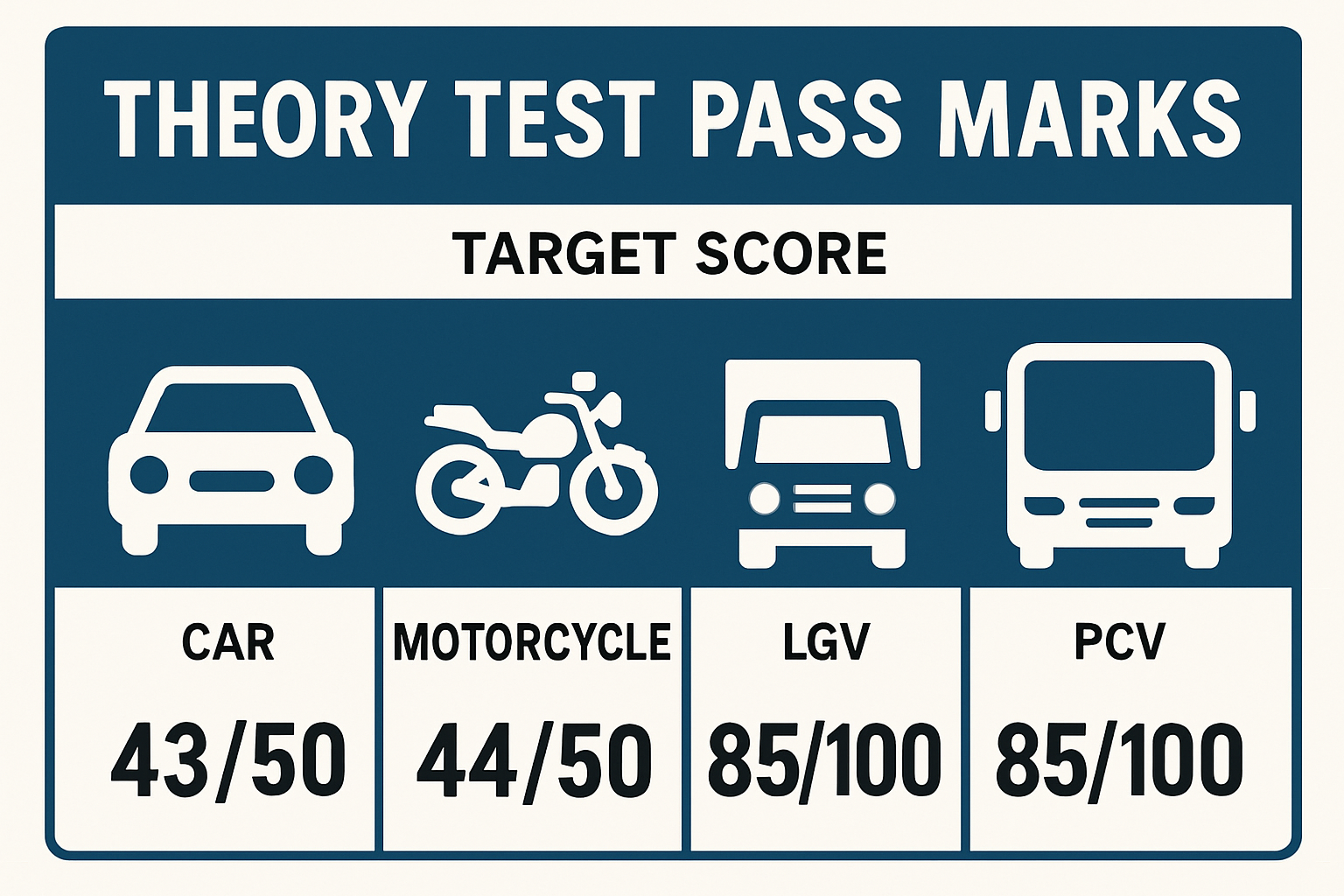Passing the theoretical driving test is more important than ever for new drivers in 2025. With evolving regulations, advanced question formats, and a fully digital testing environment, preparation has become both more challenging and essential.
Successfully mastering the theoretical driving test is not just a requirement—it is a key step toward gaining safe, independent driving skills and developing the confidence needed on today’s roads.
This guide will walk you through proven step-by-step strategies, must-know topics, practical study tips, and the latest updates for 2025. Whether you are just starting out or aiming for a first-time pass, you will find everything you need to succeed.
Understanding the Theoretical Driving Test: Structure and Requirements
Preparing for the theoretical driving test is an essential milestone for every aspiring driver. This section breaks down what the test involves, how it is structured, who can take it, 2025 updates, and common misconceptions. Understanding these details will help you approach your preparation with clarity and confidence.
What is the Theoretical Driving Test?
The theoretical driving test is a computer-based assessment designed to evaluate a candidate’s knowledge of road rules, safe driving practices, and hazard awareness. It is a mandatory step before taking the practical driving test in the UK.
The purpose of the theoretical driving test is to ensure all new drivers understand the Highway Code, road signs, and basic vehicle safety before gaining a full licence. In 2025, the test has been updated to reflect modern driving environments and new regulations, making preparation more important than ever.
Test Format and Sections Explained
The theoretical driving test consists of two main parts: multiple-choice questions and a hazard perception assessment. For cars, the multiple-choice section includes 50 questions, with a pass mark of 43, and a time limit of 57 minutes. The hazard perception part features 14 video clips, where candidates identify developing hazards.
Different vehicle categories—such as motorcycles, large goods vehicles (LGV), and passenger-carrying vehicles (PCV)—have specific formats and requirements. You can find a detailed breakdown of formats for each vehicle type in the Theory Test Format Explained guide.
Eligibility and Registration Process
To sit the theoretical driving test, you must meet specific eligibility criteria. Candidates must be at least 17 years old (16 for mopeds), reside in the UK, and hold a valid provisional driving licence.
The registration process involves:
- Completing an online or phone application.
- Providing identification (usually a UK passport or biometric residence permit).
- Paying the test fee via accepted payment methods, such as credit/debit cards.
Be sure to gather all required documents before booking to avoid delays or complications.
Key 2025 Updates and DVSA Standards
In 2025, the theoretical driving test introduces several important updates. Expect new question types that test situational judgment and understanding of eco-friendly driving. The hazard perception section now uses a mix of CGI and real-life video clips to better simulate real-world conditions.
Changes to the Highway Code and road signs have also been incorporated. These updates aim to reflect the latest standards set by the DVSA and ensure drivers are equipped for current road environments.
Common Myths and Misconceptions
There are many myths about the theoretical driving test that can cause unnecessary stress. Some believe the test is filled with trick questions or is impossible to pass on the first attempt. In reality, the average first-time pass rate was around 47% in 2023, according to DVSA data.
Common misconceptions include:
- You only need to memorize questions, not understand concepts.
- The hazard perception test is purely luck-based.
- The test is easier for certain vehicle categories.
Thorough preparation and understanding of the material are the real keys to success.
Step-by-Step Guide: Preparing for the Theory Test
Are you starting your journey toward passing the theoretical driving test? A structured approach is essential for success. This guide breaks down each stage of preparation, helping you focus on the most effective strategies at every step.
Step 1: Understanding the Syllabus and Key Topics
The first step in preparing for the theoretical driving test is gaining a clear understanding of the official DVSA syllabus. This document outlines every topic you will encounter on the exam.
Key areas include:
- Road signs and their meanings
- Rules of the road and current legislation
- Safety margins and stopping distances
- Hazard awareness and defensive driving
- Vehicle handling and maintenance basics
By reviewing the syllabus, you ensure your study covers all aspects of the theoretical driving test. Focus on each section equally to avoid unexpected gaps in your knowledge.
Step 2: Gathering Study Materials
Quality study resources are vital for anyone preparing for the theoretical driving test. Start with the latest DVSA publications, such as the Highway Code and the official theory test book.
Consider supplementing with:
- Digital platforms offering interactive quizzes
- Mobile apps tailored to the 2025 test format
- Up-to-date practice question banks
- Audio guides for on-the-go revision
Always verify that your materials reflect the newest rules and question styles for the 2025 theoretical driving test. Using outdated resources can leave you unprepared for recent changes.
Step 3: Building a Study Schedule
Effective time management makes a significant difference when preparing for the theoretical driving test. Develop a study schedule that fits your routine and allows for steady progress.
Sample weekly plan:
| Day | Activity |
|---|---|
| Monday | Review road signs and markings |
| Tuesday | Practice multiple-choice questions |
| Wednesday | Study hazard perception techniques |
| Thursday | Revise Highway Code updates |
| Friday | Take a short mock test |
| Weekend | Reflect on mistakes and plan next week |
Balance your theoretical driving test revision with practical driving lessons. Consistency is more effective than cramming, so aim for short, regular sessions.
Step 4: Practicing Multiple-Choice Questions
Practicing with real exam-style questions is crucial for building confidence in the theoretical driving test. Use official question banks to familiarize yourself with both fact-based and scenario-based inquiries.
Tips for effective practice:
- Read each question carefully before answering
- Eliminate obviously incorrect options
- Mark difficult questions for review
- Track progress to identify weak areas
Frequent practice helps you recognize patterns and improves your response time. Analyze your results to focus on areas needing improvement before the actual theoretical driving test.
Step 5: Mastering Hazard Perception Skills
The hazard perception section is a unique challenge in the theoretical driving test. It evaluates your ability to spot developing dangers early and respond appropriately.
To master this skill:
- Practice with a range of video clips, including both CGI and real-life footage
- Learn to identify vulnerable road users, such as cyclists and pedestrians
- Study common hazard scenarios in urban and rural settings
Leverage resources like the Hazard Perception Test Practice platform, which offers realistic clips and detailed feedback. Regular practice helps you anticipate hazards confidently during the theoretical driving test.
Step 6: Simulating Real Test Conditions
Simulating the actual exam environment is essential for reducing anxiety and increasing accuracy on the theoretical driving test. Schedule full-length mock tests under timed conditions.
Benefits of this approach:
- Familiarizes you with the digital test interface
- Helps manage time effectively
- Highlights areas for further revision
After each mock test, review your answers and note any recurring mistakes. Repeating this process builds resilience and prepares you for the pressure of the real theoretical driving test.
Step 7: Final Preparation and Booking the Test
In the final phase, focus on consolidating your knowledge and ensuring you are test-ready for the theoretical driving test. Create a checklist of key revision topics and organize your documents for test day.
Checklist:
- Review all major theory topics
- Confirm your test booking and print confirmation
- Prepare valid identification and required paperwork
You can book the theoretical driving test online or by phone. On the day, arrive early and bring all necessary items. A calm, prepared mindset will help you perform your best.
Essential Topics You Must Know for the 2025 Theory Test
Understanding the essential topics for the 2025 theoretical driving test is the key to passing with confidence. Each section of the exam focuses on vital knowledge that every safe driver must possess. By mastering these core areas, you will be well-prepared for both the test and real-world driving.
Road Signs and Markings
Recognizing and interpreting UK road signs is a fundamental part of the theoretical driving test. You'll encounter warning, regulatory, and informational signs, each with a unique shape and color. For example, a red circle means a regulatory instruction, while a triangle signals a warning.
Many candidates confuse signs like "No entry" (red circle with white bar) and "No vehicles" (white circle with red border). Understanding these differences is crucial for both the exam and safe driving.
For an in-depth look at these signs, consult the Road Signs and Markings Guide, which covers all symbols you may encounter. Mastering this topic helps you react appropriately to road situations during your theoretical driving test.
Rules of the Road and Highway Code Updates
A strong grasp of the rules of the road is essential for the theoretical driving test. You must know who has priority at junctions, roundabouts, and pedestrian crossings. The 2025 Highway Code introduces several changes, including an updated hierarchy of road users, placing greater emphasis on protecting the most vulnerable.
One important update involves new guidelines for overtaking cyclists, requiring drivers to leave ample space. Understanding these changes ensures you answer the latest questions correctly and stay compliant with the law.
Familiarize yourself with recent code amendments, as the theoretical driving test will reflect the most current regulations. Keeping up-to-date will help you avoid common pitfalls during the exam.
Safe Driving and Hazard Awareness
Spotting hazards early is a major focus of the theoretical driving test. You need to identify developing hazards in different driving environments, such as busy urban streets or quiet rural roads. Defensive driving principles, like maintaining a safe distance and anticipating other road users' actions, are frequently tested.
For example, in urban settings, watch for pedestrians stepping out unexpectedly, while in rural areas, be vigilant for slow-moving vehicles or animals. Recognizing these hazards quickly can make a significant difference in both passing your test and driving safely.
Practicing hazard perception skills prepares you for this crucial part of the theoretical driving test, ensuring you are ready for any situation.
Vehicle Handling and Safety Checks
The theoretical driving test also assesses your understanding of basic vehicle handling and safety checks. You'll be expected to know how to perform routine maintenance, such as checking tire pressures and fluid levels, and how to interpret dashboard warning lights.
For instance, if a tire pressure warning appears, you should know to stop in a safe place and check your tires before continuing. These practical skills not only help you pass the test but also keep your vehicle in good working order.
Being familiar with these checks makes you a responsible driver and shows your readiness for the road during the theoretical driving test.
Vulnerable Road Users and Environmental Awareness
Protecting vulnerable road users is a growing priority in the 2025 theoretical driving test. You must recognize how to share the road safely with pedestrians, cyclists, and motorcyclists. New questions may cover eco-driving techniques and environmental responsibilities, such as reducing emissions and driving carefully in low-emission zones.
For example, when driving near a school, slow down and watch for children crossing. In low-emission areas, be mindful of restrictions and your vehicle’s environmental impact.
By understanding these responsibilities, you demonstrate your commitment to safety and environmental stewardship during your theoretical driving test.
Practice Makes Perfect: Effective Revision Strategies
Mastering the theoretical driving test requires more than just reading the Highway Code. Consistent and strategic revision is the key to building knowledge and confidence. Let us explore proven methods to help you prepare effectively for the theoretical driving test.
Benefits of Regular Practice and Mock Tests
Frequent practice is essential when preparing for the theoretical driving test. Engaging in regular mock tests not only improves memory retention but also helps candidates adapt to the exam format and timing. Studies show candidates who complete multiple mock tests are more likely to pass on their first attempt.
Setting a target number of practice tests can provide structure and motivation. For instance, aiming for at least five full-length mock tests before your actual theoretical driving test is a practical goal. This approach familiarizes you with question patterns, time constraints, and the types of scenarios you will encounter.
Mock testing also highlights areas where you need further study. By tracking your scores and noting repeated mistakes, you can focus your revision more effectively. Consistency truly turns knowledge into instinct, making you better prepared for the theoretical driving test.
Using Digital Tools and Interactive Resources
Digital platforms have transformed how learners prepare for the theoretical driving test. Online resources, mobile apps, and interactive quizzes make studying more engaging and accessible. Many platforms offer instant feedback, gamified progress tracking, and video explanations, all designed to reinforce learning.
Interactive road sign quizzes, virtual flashcards, and hazard perception simulations are particularly effective. These tools not only test your memory but also improve your recognition skills in real-world contexts. Features like daily challenges and leaderboards can add an element of motivation and friendly competition.
Leveraging digital tools allows you to study anytime, anywhere. This flexibility is crucial for busy learners balancing other commitments. Ultimately, integrating technology into your study routine can streamline your revision and boost your confidence for the theoretical driving test.
Group Study and Peer Learning
Group study is a valuable strategy for the theoretical driving test. Joining a study group, whether in-person or online, opens up opportunities for discussion, shared resources, and peer support. Explaining concepts to others can solidify your understanding and reveal gaps in your knowledge.
Online communities and social media groups dedicated to the theoretical driving test are excellent places to ask questions and share revision tips. Members often post practice questions, discuss tricky topics, and offer encouragement throughout the preparation process.
Collaborative learning also makes revision more enjoyable and less isolating. By working with others, you gain new perspectives and strategies that can enhance your own preparation for the theoretical driving test.
Reviewing Mistakes and Continuous Improvement
One of the most effective revision strategies involves analyzing your mistakes and targeting weak areas. Keeping a log of incorrect answers helps you identify patterns and focus your efforts where they matter most. Creating flashcards for challenging topics is a proven technique for active recall and retention. For example, specialized Theory Test Revision Flashcards are designed to help candidates tackle common pitfalls on the theoretical driving test.
Regularly reviewing your log and flashcards ensures continuous improvement. Try to revisit tricky questions after a few days to reinforce your memory. This targeted approach not only addresses your weaknesses but also builds confidence for the actual test.
Persistence and adaptability in your revision routine are key. With each review session, you move one step closer to passing the theoretical driving test.
On the Day: What to Expect and How to Succeed
Preparing for the big day of your theoretical driving test is just as important as your study routine. Understanding what to expect at each stage will help you stay calm, focused, and ready to perform your best. Here’s a step-by-step breakdown of what happens at the test centre, how to navigate the test environment, and practical tips for success.
Arriving at the Test Centre
Arriving prepared is the first step to a smooth theoretical driving test experience. Bring your valid photo ID, your confirmation email or letter, and only permitted personal items. Arrive at least 15 minutes early to allow time for check-in and security procedures.
Common mistakes include forgetting essential documents or arriving late, which can prevent you from taking the theoretical driving test. Always double-check your appointment details and location. If you’re unsure about new check-in procedures or changes for 2025, consult resources like Driving Test Changes and Innovations January 2025 for updates.
Once inside, you’ll be guided to a digital workstation for your theoretical driving test. The interface is intuitive, allowing you to flag questions for review and monitor your progress with an on-screen timer. Before starting, take advantage of the practice screens to familiarize yourself with the controls.
If you encounter new question formats or updated video content, remember these changes reflect the latest DVSA standards. For a detailed overview of what’s new in the 2025 test, refer to the UK Driving Theory Test Rule Changes September 2025. Managing your time wisely and reviewing flagged questions can make the difference between passing and failing.
Managing Nerves and Staying Focused
Test day nerves are natural, but managing them will help you perform better on the theoretical driving test. Use deep breathing techniques or positive visualization to calm your mind before and during the test. Picture yourself confidently answering each question and navigating the interface smoothly.
If allowed, take a brief pause between sections to reset your focus. Remind yourself that thorough preparation has given you the tools to succeed. Staying composed under pressure is just as valuable as knowing the material.
Answering Multiple-Choice Questions Effectively
Approach each multiple-choice question on the theoretical driving test with care. Read every question and all possible answers thoroughly before selecting your response. If you’re unsure, eliminate obviously incorrect choices to increase your odds of choosing the right one.
For “select all that apply” questions, ensure you review each option carefully. Make educated guesses if needed, but don’t leave any questions unanswered. Practicing these strategies beforehand will help you maximize your score.
Approaching the Hazard Perception Test
The hazard perception portion of the theoretical driving test requires sharp observation and quick reactions. Watch each video clip closely, clicking as soon as you spot a developing hazard. Remember, both CGI and real-life videos may appear, reflecting the latest DVSA updates.
Avoid clicking too frequently, as this can result in penalties. Focus on identifying hazards such as pedestrians, cyclists, or unexpected obstacles. Practicing with official and third-party clips before the test will help you recognize patterns and respond accurately during the real assessment.
Now that you have a clear understanding of what to expect from the 2025 theory test and effective steps to prepare, it’s the perfect time to put your knowledge into action. Practicing with up-to-date DVSA questions, unlimited mock exams, and real hazard perception clips can make all the difference as you build your confidence. If you’re just starting out or want to see where you stand, you don’t have to commit right away—why not take advantage of free resources designed for beginners? You can Practice for free and take your first step toward passing with confidence.
Contents
- 1 Understanding the Theoretical Driving Test: Structure and Requirements
- 2 Step-by-Step Guide: Preparing for the Theory Test
- 2.1 Step 1: Understanding the Syllabus and Key Topics
- 2.2 Step 2: Gathering Study Materials
- 2.3 Step 3: Building a Study Schedule
- 2.4 Step 4: Practicing Multiple-Choice Questions
- 2.5 Step 5: Mastering Hazard Perception Skills
- 2.6 Step 6: Simulating Real Test Conditions
- 2.7 Step 7: Final Preparation and Booking the Test
- 3 Essential Topics You Must Know for the 2025 Theory Test
- 4 Practice Makes Perfect: Effective Revision Strategies
- 5 On the Day: What to Expect and How to Succeed

